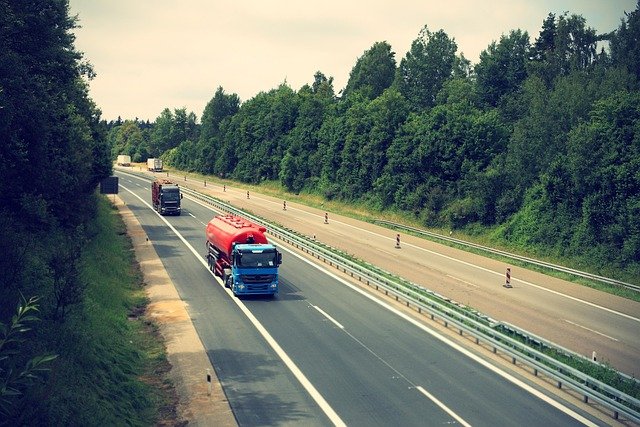Reducing carbon impact through smarter route selection
Smarter route selection can noticeably reduce travel-related carbon emissions without requiring radical changes to travel plans. By considering factors such as choice of mode, transfer timing, connections, luggage strategy, and last-mile micromobility options, travelers and logistics planners can cut emissions while preserving convenience. This article outlines practical approaches for planning lower-carbon itineraries across airports, rail, rideshare, and freight contexts.

Travel decisions influence carbon impact at every stage, from choosing a nonstop flight to opting for rail or adjusting an itinerary to avoid inefficient layovers. Understanding how mobility choices add up—considering airport transfers, visa constraints that affect routing, and luggage handling—lets travellers and planners design routes that reduce emissions. This article considers practical route-selection strategies across passenger and freight movements and highlights providers and services that can assist with lower-carbon connections.
How can mobility choices lower emissions?
Selecting the right mobility mix—combining rail, commuter transit, micromobility, and carefully chosen rideshare options—reduces per-passenger emissions. Trains typically emit less CO2 per passenger-kilometre than short-haul flights, and electric micromobility for the last mile can replace car pickups. Trip consolidation, minimizing luggage that requires extra handling, and planning itineraries to avoid unnecessary returns all decrease miles travelled and fuel use. Consider local services for public transit and micromobility in your area to shorten car legs and avoid high-emission taxi runs.
How does itinerary planning affect carbon output?
An itinerary that prioritises direct routing and sensible connections can cut emissions by avoiding repeated takeoffs and landings and by reducing ground transfers. Flexible timing reduces the pressure to choose faster, higher-emission options. Combine trips when possible (for instance, bundling multiple meetings into one trip) and use connection-aware search tools that flag low-emission alternatives. Visa requirements and border procedures can influence routing choices; planning around predictable processing times avoids detours or overnight waits that increase emissions from longer journeys and hotel stays.
What role do airports and layovers play?
Air travel’s carbon intensity rises with takeoff and landing cycles, so minimizing layovers and selecting direct flights when feasible helps. Airport transfers also add emissions: choosing efficient public transit or low-emission shuttle options for airport connections lowers overall impact compared with individual car rides. At busy hubs, longer layovers often translate into extra ground transport, additional luggage handling, and increased energy use. When a layover is unavoidable, prioritize shorter, well-timed connections and look for airports with efficient intermodal links to rail or electric transfer services.
When is rail or rideshare more efficient?
Rail is often the lower-carbon alternative for regional and intercity journeys, especially where electrified networks operate on low-carbon grids. Rideshare can be efficient for door-to-door legs when shared trips are available or when replacing multiple single-occupancy car trips, but shared pooled options yield the largest per-person benefits. Commuter services—such as suburban trains and buses—are effective for persistent routes. Evaluate total itinerary emissions rather than just single segments: combining a high-efficiency rail core with electric micromobility for the last mile can outperform a single long car route.
How do logistics, freight, and luggage influence impact?
Freight routing and logistics decisions drive a large share of transport emissions. Consolidating shipments, optimising freight itineraries, and prioritising rail or maritime legs over air freight when time allows reduces carbon intensity. For passenger travel, luggage choices matter: lighter or fewer bags reduce aircraft weight and simplify multimodal transfers, cutting emissions across the itinerary. Effective logistics planning also reduces empty return legs and improves vehicle utilisation, which is critical for lowering supply-chain emissions.
Which providers support low-carbon connections?
Many established providers and platforms offer lower-emission routing options or intermodal connections that integrate rail, rideshare, and micromobility. The table below lists real providers and the services they offer to help plan or execute lower-carbon journeys.
| Provider Name | Services Offered | Key Features/Benefits |
|---|---|---|
| Amtrak | Intercity rail (US) | Electrified corridors in some regions, seat-based travel that can have lower per-passenger emissions than short flights |
| Deutsche Bahn | National and international rail (DE/EU) | Extensive electrified network, integrated connections to regional transit |
| BlaBlaCar | Long-distance rideshare (Europe/Latin America) | Carpooling marketplace that increases vehicle occupancy and reduces per-person emissions |
| Uber (pooled/e-bike options) | Rideshare, e-bike/scooter rentals in some cities | Pooled rides reduce per-passenger emissions; some cities offer electric micromobility integration |
| Lime | Micromobility (global) | Electric scooters and bikes for short trips and last-mile legs, reducing car dependency |
Conclusion
Smarter route selection combines mode choice, itinerary design, and logistical decisions to reduce carbon impact without sacrificing practicality. By favouring lower-emission modes where possible, planning connections to minimise redundant travel, consolidating luggage and freight, and using shared or electric last-mile options, travellers and planners can make measurable reductions. Integrating available provider services into planning routines and prioritising efficient connections supports lower-carbon mobility across both passenger and freight systems.





